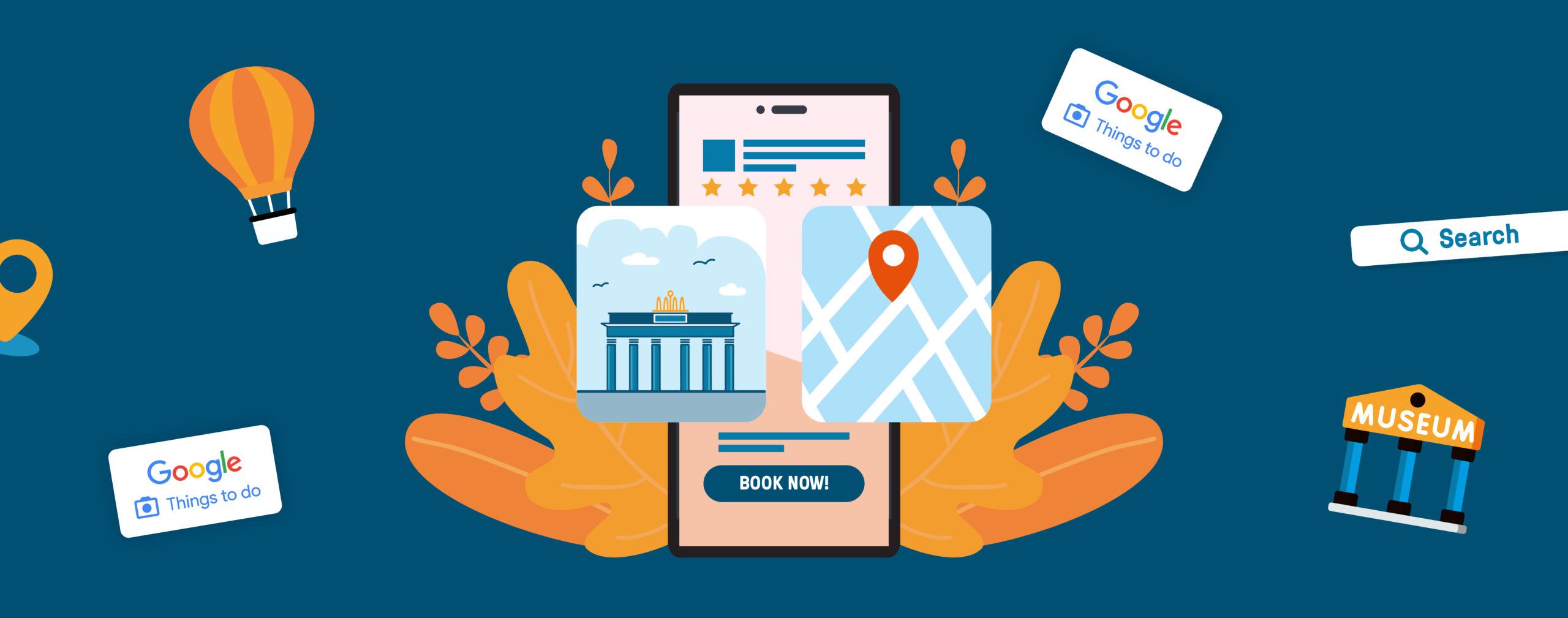A definitive guide on how to unlock Google Things to do
Product & Partners
Have you ever noticed how frequently you use Google to search for information or to get inspiration on things to do or see? Statistics say that nearly 92% of all global searches happen on this search engine. It’s no surprise that almost half of all of them are for local businesses and attractions: people want to know what’s around them, whether it’s a museum or a boat tour. And that’s why, in order to offer a further improved user experience, the American tech giant decided to launch their very first platform in 2021 dedicated to activities, Google Things to do, which enables qualified partners to show travel activity related items on Google-owned surfaces. In a nutshell, it’s a new way for users to discover attractions, tours and activities on Google Search, Google Maps or Google Business Profiles.
In this comprehensive guide you will get a grasp of what Google Things to do is, discover the latest updates and learn all the benefits for your leisure and activity business.
Table of contents
Overview: what is Google Things to do
How does Google Things to do work
Overview: what is Google Things to do
Google Things to do is a platform intended to further simplify and improve the user’s research and booking experience by helping them discover unique tours, activities, and attractions within a destination. Not only do operators have the opportunity to list and show their inventory for free (or through paid advertisements) on Google’s surfaces, but also the destinations gain more visibility.
A key aspect of Google Things to do is that it’s based around Points of Interest (POIs), i.e. locations that have a special or particular interest for a particular purpose. A Point of Interest can be a tourist attraction, a cultural or archeological site, a landmark or a recreational facility and may either charge an entrance fee or not; examples include museums, theme parks, zoos, city sights, national parks, and so on.
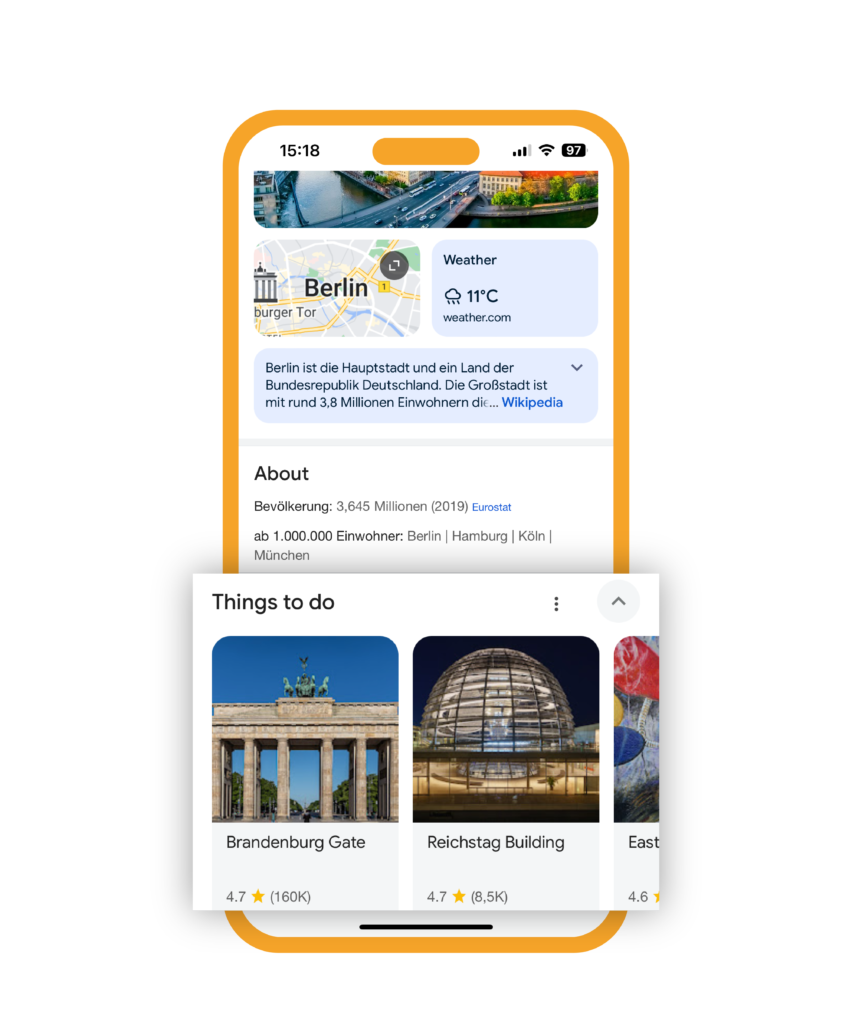
How does Google Things to do work?
Since its first launch in 2021, Google has been continuously improving its Things to do service/ platform. For example, in 2022 they launched it on Google Maps and last year they added a brand new module exclusively dedicated to tour operators.
For the end customer:
When a user searches on Google for a specific keyword or POI, e.g., The Lighthouse of Genoa, together with general results they are shown links to directly book an admission or other ticket options, if available, to that POI. Moreover, they are also able to book several different experiences and guided tours within the destination.
For the experience provider:
As an operator and if you meet certain eligibility criteria, you can submit your product feed to Google Things to do so that it can be shown to users across multiple Google surfaces. Most importantly, providers can promote ticket booking links completely for free and make sure users are redirected to their own websites or landing pages when clicking on their listing so that they can directly book a ticket or tour.
Google Things to do for activity operators: modules and surfaces
As an operator, you can look at Google Things to do as a platform which is divided into four modules, each of them displayed in several different ways across Google surfaces. But what are Google surfaces exactly? A surface is where Google showcases products, i.e. activities, experiences or attractions available within a destination. Your listing can be displayed on multiple surfaces, depending on the module you are eligible for, such as search result pages, the Maps App, your Google Business Profile, the ads section or Google Travel.

Booking Module
The Booking module or Admission module is designed to show users entry ticket prices to various attractions or points of interest. In this module, which is tied to a Google Business Profile on the Search and Maps surfaces, users can easily compare entry ticket prices between the official provider (if you are the owner you can receive the “Official website” badge) and third-party listings (OTAs) by clicking on the “Tickets” button. Important: guided tours are not eligible for the POI booking module, however they are eligible for the operator booking module and the experiences module.
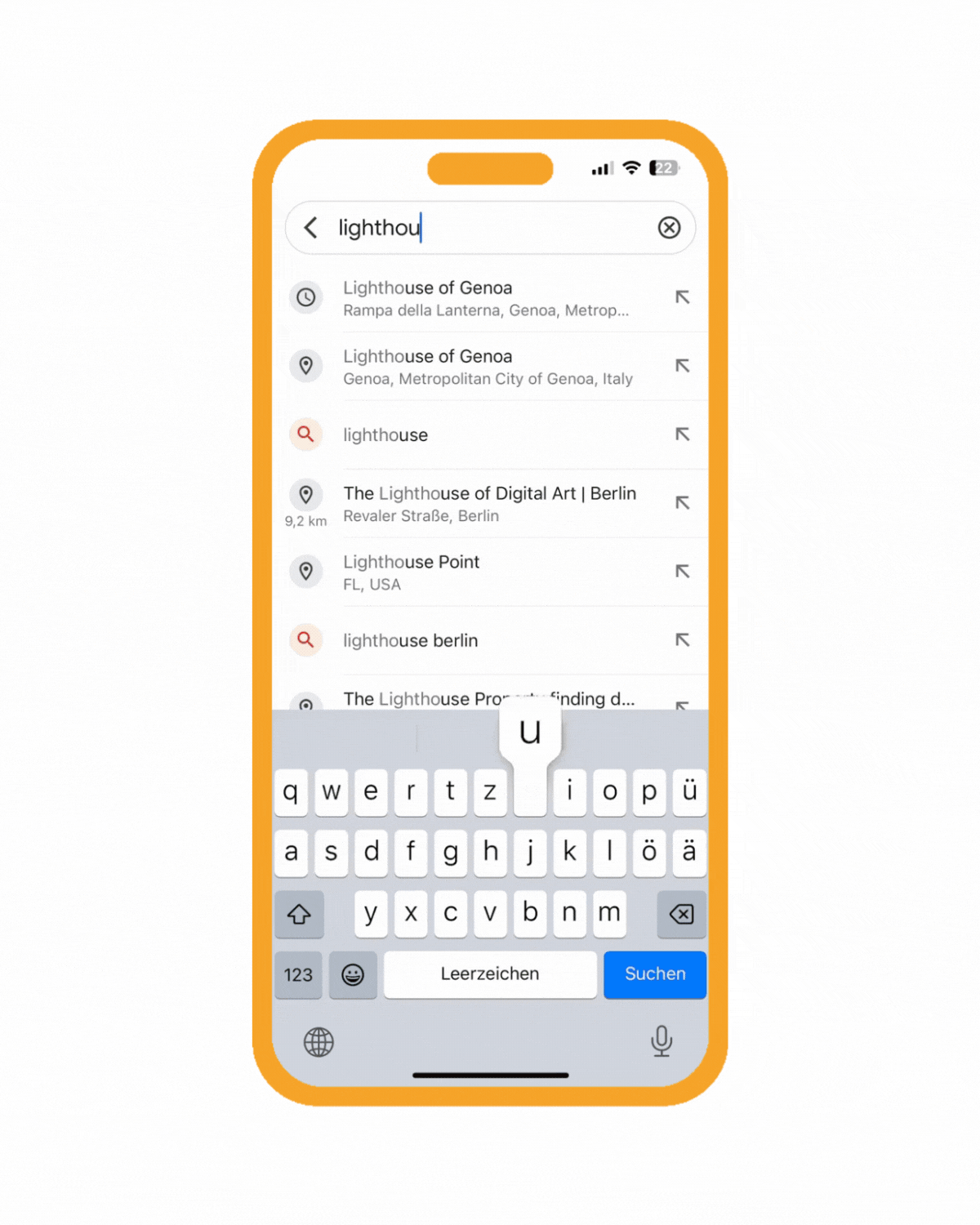

Experiences Module
The Experiences module, which also appears on the Search and Maps surfaces, lists guided tours or other “meaningful” activities that have a certain POI included in their offering (free landmark or ticketed attraction, it does not matter). Whenever a user searches for that specific POI or related query, links to your website are displayed and bookings can be made directly on your website.


Operator Booking Module (OBM)
The Operator Booking module is the latest addition to the Things to do platform, which enables tour operators (not attractions) to list their tours and activities directly on their Google Business Profile. This module appears both on search result pages as well as on Google Maps. The user still has the option to compare your offer with those of the OTAs and other resellers, but if you are the official provider, you will appear at the top of the listing, and can of course claim the “Official website” badge next to your listing.
So who is eligible for this feature? Boat tours, walking tours, tours by bike, rickshaw or scooter, trampoline parks, escape rooms, etc.


Ads Module
The Ads module appears whenever a user searches for a point of interest or experiences to do in a particular destination. It consists of either carousels displayed in the search result page (above the organic results or elsewhere) or a placesheet appearing on Google Maps and operators’ Business Profiles. The users can click on a booking link and land on your landing page to book your experience.

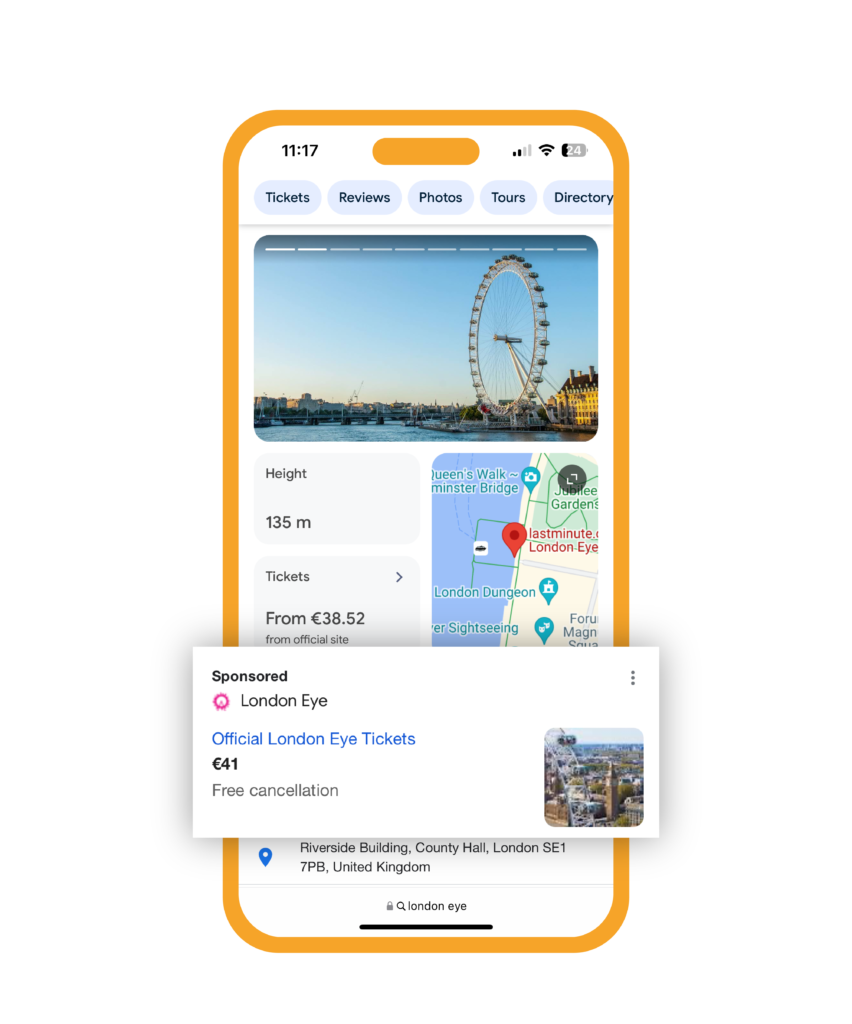
While the first three modules are available completely for free, the last one is of course a paid feature.
5 main reasons why you should sell your experiences on Google Things to do
As we mentioned before, Google is the main source of information for tourists and visitors before and during their trip, especially because it gives them recommendations and options to compare from.
That’s why having your own activities, experiences and tours visible and bookable online on Google should be a must for your business. With Google Things to do you get:
- Free visibility of your business and products across several Google surfaces;
- Additional attention and reach of millions of users worldwide;
- Direct integration or through an established connectivity partner;
- A greater volume of direct, commission free bookings;
- Increased traffic, higher conversion rates, and optimized online ranking.
Market outlook: why Google Things to do should be part of your marketing mix?
Research conducted by Google shows that travelers ask specific queries or look for specific points of interest when deciding for their next destination. That’s why Google’s big goal is to map the whole planning phase of the traveler, including discovery stage, flight and hotel booking, and available experiences.
According to Techopedia statistics, in January 2024 Google’s market share as a global search engine was 91.5%, compared to Bing’s 3.5%.
Other interesting facts are:
- Almost half of all searches are for something local (e.g., “restaurants near me” or “museums near me”);
- In the 12 weeks leading up to a trip, the volume of searches for experiences usually increases by 8 times;
- 48% of experience bookings happen once travelers arrive at their destination.
When it comes to booking trends, our internal data illustrates two major patterns:
- In 2022 visits to operators’ websites mostly happened from Google Search. In the past twelve months we could see an increase in traffic coming from Google Maps, instead;
- Peaks in bookings via Google Things to do have been registered especially in months with public holidays or vacations, e.g. April (Easter), summer, and October, and mostly for city tours, city sights, museums, and attractions.
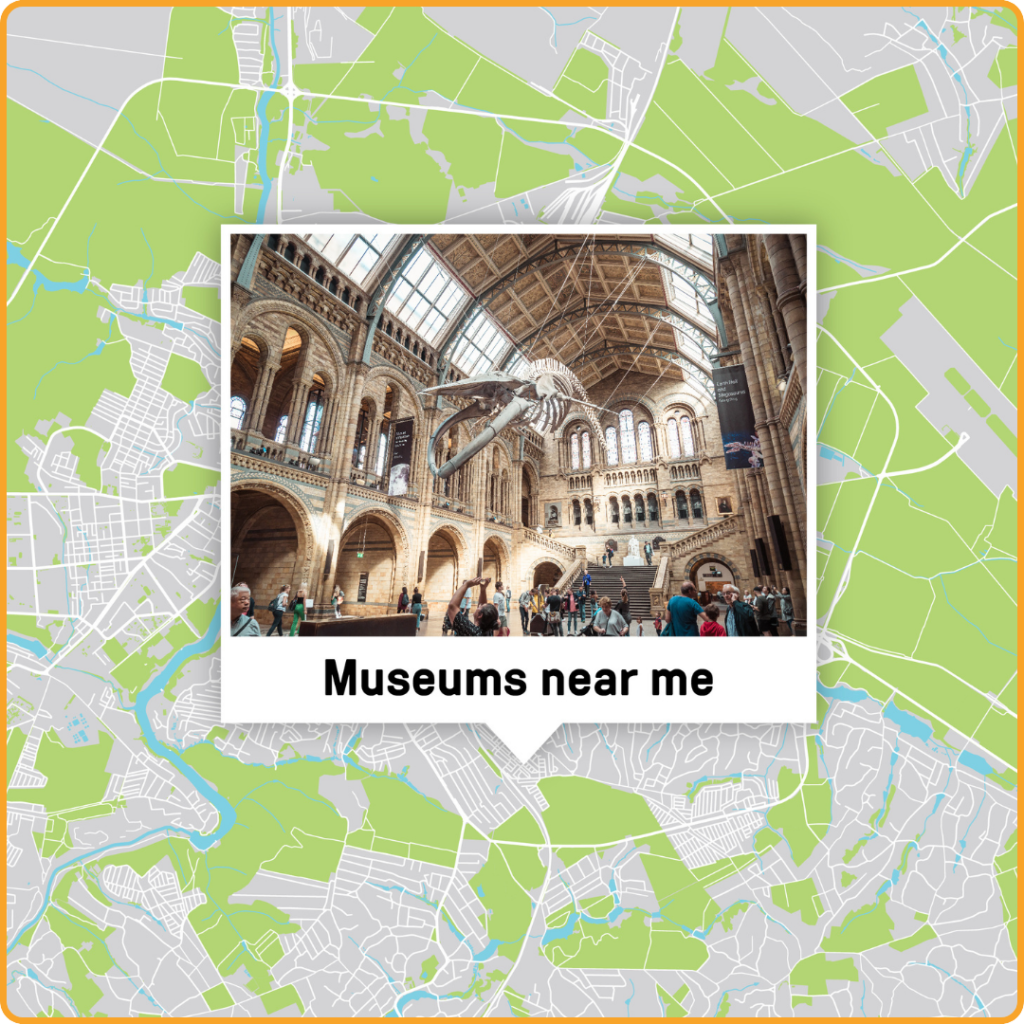
Best practices to get started with Google Things to do: requirements and setup
You read this far and think that Google Things to do is too complicated for you? Quite the opposite, especially if you decide to connect through an official connectivity partner like bookingkit!
First things first: your product feed is the primary way for you to submit a list of things to do products to Google, which can then be displayed on various Google surfaces.
Note: for each of the four modules described above, Google has highlighted specific required and recommended fields.
Other basic requirements are:
- Having a landing page (not your website homepage) for each individual product you want to display on Google Things to do specifically mentioning the POI;
- Offering an intuitive booking process, which is connected to a payment gateway (e.g., Stripe);
- In order for the Operator Booking Module to be shown, operators must be findable on Google Maps, hence have a fixed address and an active Google Business Profile;
- Following Google’s general policy to receive the official site badge.
bookingkit is Google’s official connectivity partner: easy connection and activation
Google Things to do’s mission is to enable businesses of all sizes and worldwide to promote their products and websites on Google surfaces. But, in order to do so, partners have to comply with several terms and conditions, and sometimes this can be quite overwhelming and time consuming.
We, at bookingkit, provide you with a comprehensive solution:
- All modules are supported: Admission, Experiences, Ads and Operator Booking Module;
- Activity, admission or tour prices as well as all corresponding data are automatically synchronized to Google Things to do;
- Tracking and ownership of customer data;
- Eligibility criteria: as an official connectivity partner, we know if a POI is either eligible or not.
How to unleash Google Things to do potential with bookingkit: first steps
1. Review Google policies:
2. Make sure that your experiences are bookable online, have appointments in the future, a price list and a precise location set;
3. Activate the Google Things to do channel in bookingkit reach and enter required information;
4. Identify your type of experience and the associated Google module (select experiences, pictures, landing pages, etc.). Note: As for the Ads module, after you set up your feed, you can connect your product data directly to your Google Ads account;
5. Wait for Google to review and publish your products online.
Conclusions
There is no doubt that Google Things to do is a must-have sales channel for tourism and leisure operators. Selling and optimizing your products for Google Search should be your first priority, and with bookingkit this gets easier than ever.






